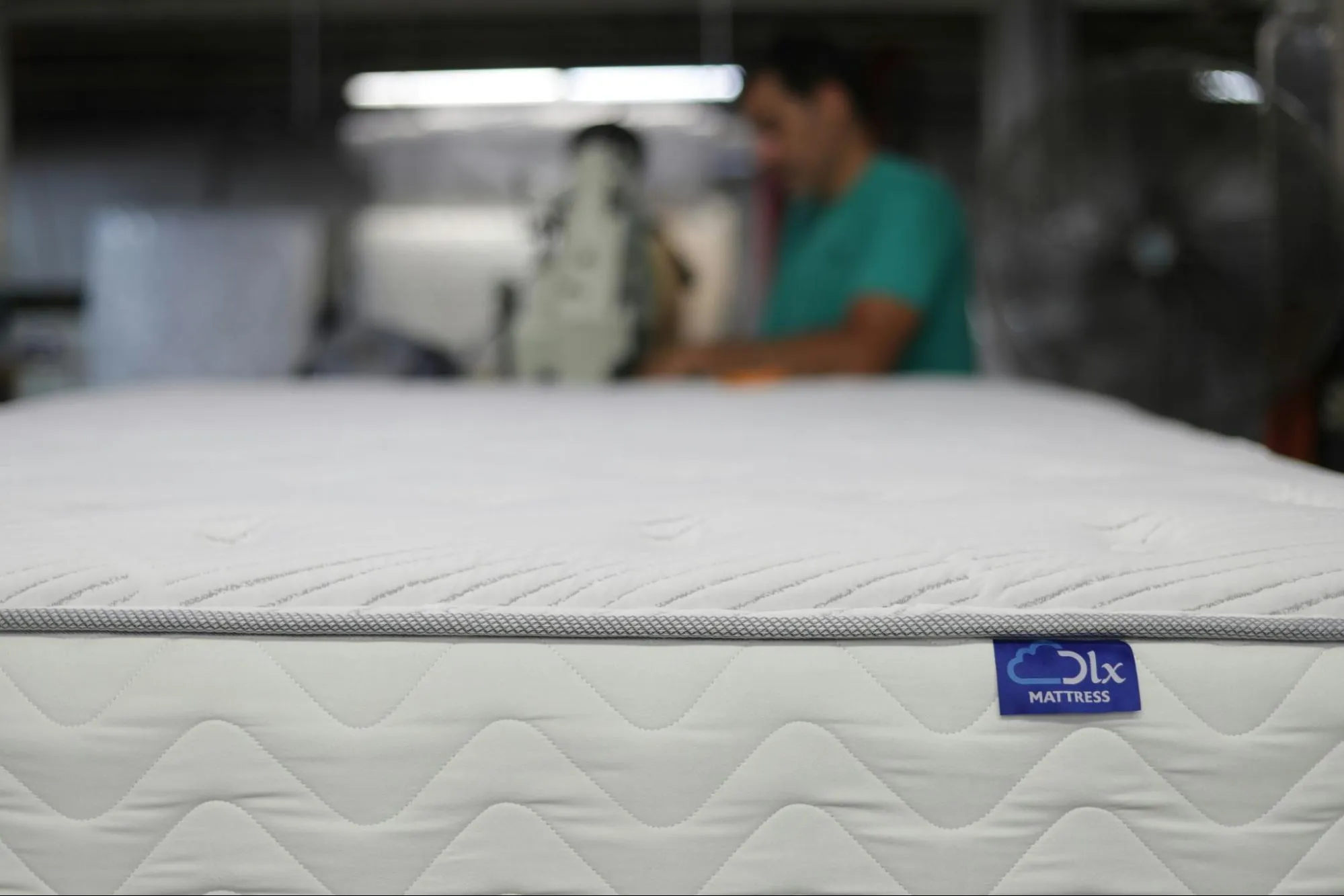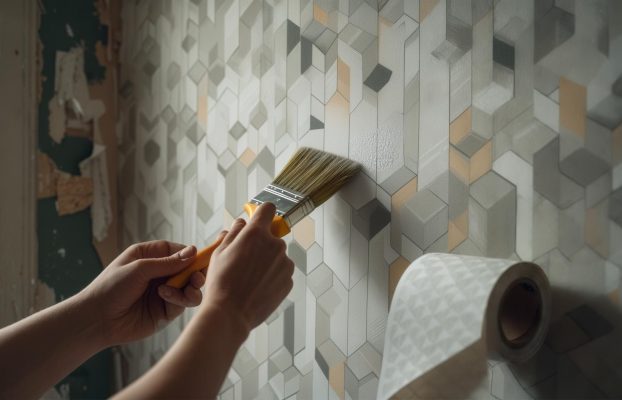Mastering the Art of Old Mattress Disposal: A Comprehensive Guide
Approximately 20 million mattresses are dumped every year in the U.S. More than 50,000 each day. It's not easy to send a mattress to a landfill. Each occupies 132 cubic feet of landfill area and has 25 pounds of recyclable stuff, such as steel and foam. When they get discarded inappropriately, they release chemicals, pollute the groundwater, and emit methane, a powerful greenhouse gas. Here’s a glimpse of how to dispose of old mattress:
- Give it away to shelters or charities if it is in decent condition
- Hire environmentally friendly removal services, such as Jiffy Junk, that specialize in recycling
- Break it up yourself to recycle pieces if you're a DIY handy person
A proper disposal option saves landfill space and reduces environmental harm. Learn the whole story with our mattress disposal guide below.
Get a Live Quote Now
Connect to a live representative and get a quote in real time for junk removal in your area.Table of Contents
TL;DR
- Mattresses harm the environment if dumped improperly
- Improper disposal leaks toxins, microplastics, and heavy metals into ecosystems
- Recycling recovers valuable materials and cuts pollution
- Components like steel, foam, and fabric can be repurposed into new products
- Mattresses can be recycled into art, agriculture, and construction
- Specialized equipment speeds up recycling
- Mattress recycling creates jobs and boosts local economies
- New methods like waste-to-energy and pyrolysis are emerging
- Eco-friendly mattresses focus on biodegradability and easy recycling
- Emotional attachment ("Sleep Sanctuary Syndrome") makes people reluctant to discard old mattresses
- Proper disposal is critical after natural disasters to prevent health risks
- Laws now push for recycling and ban landfill dumping
- Future trends include smart, recyclable mattresses
- Jiffy Junk offers green, responsible mattress removal
Environmental Impact of Mattress Disposal
Poor mattress disposal does not just litter landfills; it can damage the environment. Mattresses are made up of man-made materials that biodegrade in many years. Along the way, they leak toxic chemicals. One mattress releases millions of microplastic particles during its life cycle, most of which make their way into our rivers and food supply. At Jiffy Junk, we know a thing or two about protecting the environment, which is why we’ve took it upon ourselves to plant over 15,000 trees so far. No matter if it’s mattresses or other things that leave an impact, we’re here to help fix it!
Before considering how to dispose of an old mattress, read our article on junk removal tips for preparing your items for removal.
The Hidden Toxins in Your Old Mattress
Used mattresses contain toxic materials that are hazardous to health and the environment. Most are treated with chemicals that last decades in the environment. They are not biodegradable and have the potential to contaminate land and water.
Even after they are discarded, mattresses can still give off VOCs (Volatile Organic Compounds), chemicals linked to respiratory irritation, that off-gas into the air over time.
Certain mattress materials may also release heavy metals such as antimony and boric acid, which pollute soil and groundwater around landfill locations.
Flame Retardants: A Silent Threat
Flame retardants in the form of PBDEs (Polybrominated Diphenyl Ethers) were universally added to mattresses up to 2004. The chemicals are not chemically bonded into the material onto which they are sprayed, such that they leach out easily into the environment over time. Phased out, though, PBDEs remain in ecosystems and were detected in wildlife animal species, including birds and fish, which is an indication of bioaccumulation within food chains.
For example, in Lake Michigan, fish populations have been affected by high concentrations of flame retardants. Research suggests that migrating salmon carry these pollutants upstream and disperse them throughout local ecosystems.
It is essential to learn how to dispose of a mattress for it to not become an agent in releasing these harmful materials into the environment and causing damage to ecosystems and public health.
Microplastic Pollution from Synthetic Mattresses
Synthetic mattress materials are a significant contributor to microplastic pollution. As mattresses break down in landfills or are illegally discarded, they release millions of tiny plastic particles. These microplastics can travel through soil and water systems, ultimately entering marine environments.
Research shows a single synthetic mattress can release millions of microplastic particles over its lifetime. These particles have been found in marine sediments as deep as 2000 meters, illustrating the vast spread of mattress-related pollution.
Moreover, aquatic organisms often mistake microplastics for food, which can lead to malnutrition and other health issues. This disrupts ecosystems and poses a health threat to marine life.
Upcycling: Transforming Mattress Waste into Resources
Upcycling provides a solution to the ever-rising issue of waste mattresses. How to recycle a mattress is the first step in tremendously reducing waste, conserving valuable resources, and even creating new products. Recycling also supports the principles of the circular economy, in which materials are recycled again and again instead of being wasted.
To be specific, 90% of the components of a mattress can be recycled or reused, including steel springs, foam, and wood. Recycling a mattress can recover up to 65 pounds of material that could otherwise end up in landfills.
The international mattress recycling market is also thriving, expected to grow to $10 billion by 2028. Growing demand for green solutions and economic value of mattress recycling are fueling the growth.
An example of recycling in action is the "Richmond E-cycle Day" event, where the Richmond Department of Public Works is taking mattresses apart and reusing materials like wood and springs.
Learn how to recycle a mattress sustainably to ensure less waste and contribute to the circular economy.
Learn more about sustainable disposal in our guide on how to get rid of old appliances, which covers similar recycling principles.
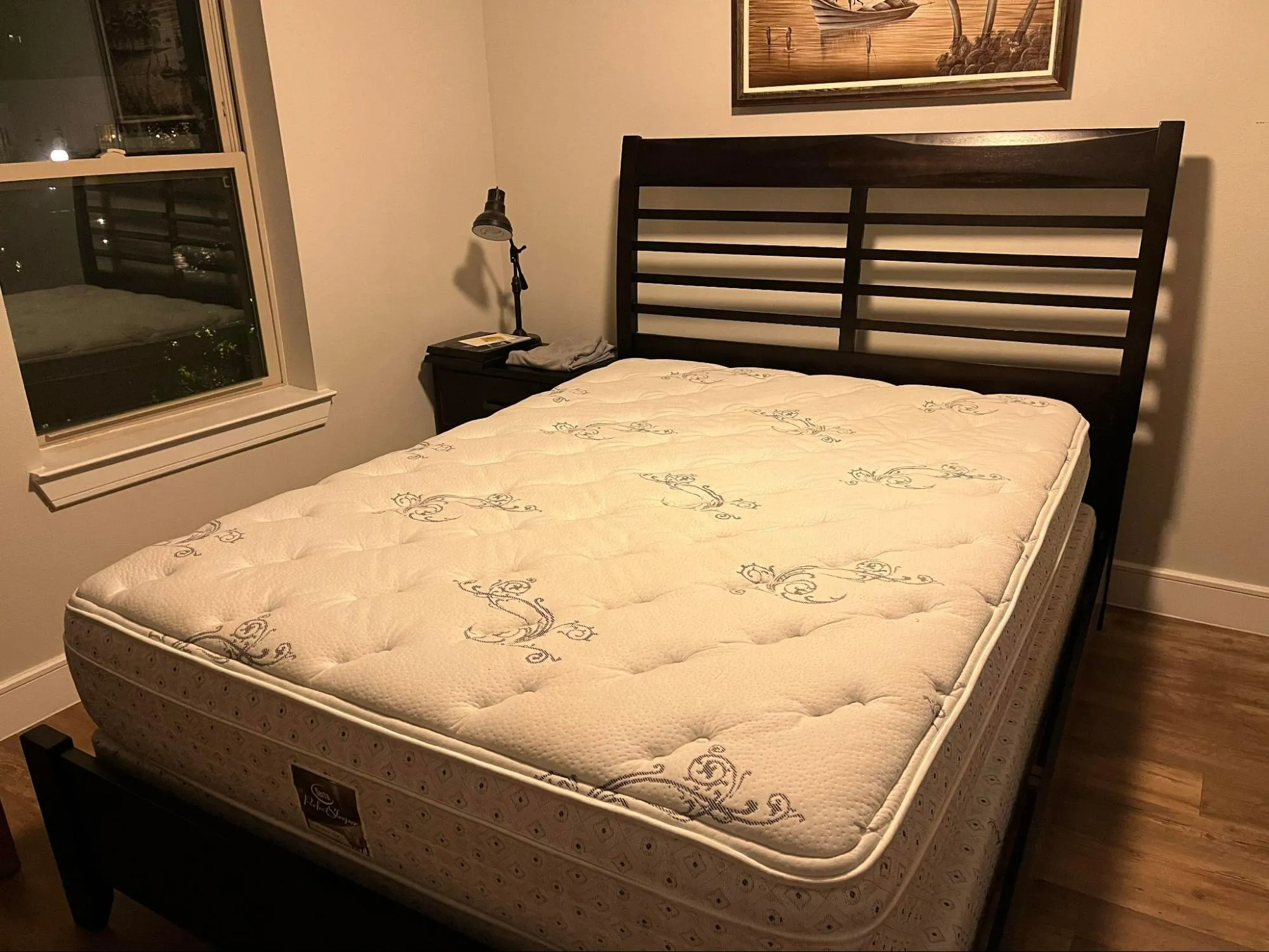
Mattress disposal turns them into resources
Source: reddit.com
From Springs to Sculptures: Artistic Repurposing
Artists and designers are repurposing old mattress components into working items and unique works of art, offering a creative and green solution for the disposal of mattresses. The process of creativity steers waste away from landfills while proving the power of upcycling on a day-to-day basis.
For example, steel springs in mattresses can be melted and reused for building purposes, for instance, for reinforcing concrete or crafting metal sculptures. Memory foam is shredded, however, and used as a pillow or pet bed filling. The fabric cover of mattresses can be reused to make valuable products such as clothing, bags, or upholstery, illustrating the flexibility of these products.
Agricultural Applications of Mattress Foam
Shredded foam from mattresses is assuming a second existence in agriculture, where it's being explored as a green alternative to traditional soil additives. Shredded foam, when added to soil, can hold 30% more water, which keeps plants moist for longer periods, especially beneficial in arid climates or during times of drought.
The foam particles also increase soil aeration, allowing more space for oxygen to pass through to plant roots. This improves the health of the roots and the overall plant growth. Foam is used as an inert, light growing medium for hydroponics, adding texture without drying or washing away moisture and nutrients.
Recycled foam in agriculture is one of the best advantages because it reduces the reliance on peat moss, which is an extremely widely used non-renewable resource. Peat mining causes habitat loss and carbon loss. Replacing it with foam conserves natural habitats and reduces environmental impact.
The Logistics of Mattress Recycling
The exact steps of how to dispose of an old mattress are relatively complex, employing customized equipment, trained labor, and logistical know-how. Recycling mills begin by taking mattresses apart by hand and separating steel, foam, wood, and fabric. Each is cleaned for recycling or reuse.
A facility may recycle up to 800 mattresses per day, which is indicative of the scale of operation needed to address this waste stream. There are over 1,000 workers in the U.S. alone employed by the mattress recycling industry, representing a substantial contribution to job creation and environmental sustainability. 70,000 mattresses are dumped in landfills in Richmond, Virginia, annually. That's a hometown perspective on the bigger issue across the country: millions of mattresses dumped in landfills when they could potentially be recycled or reused.
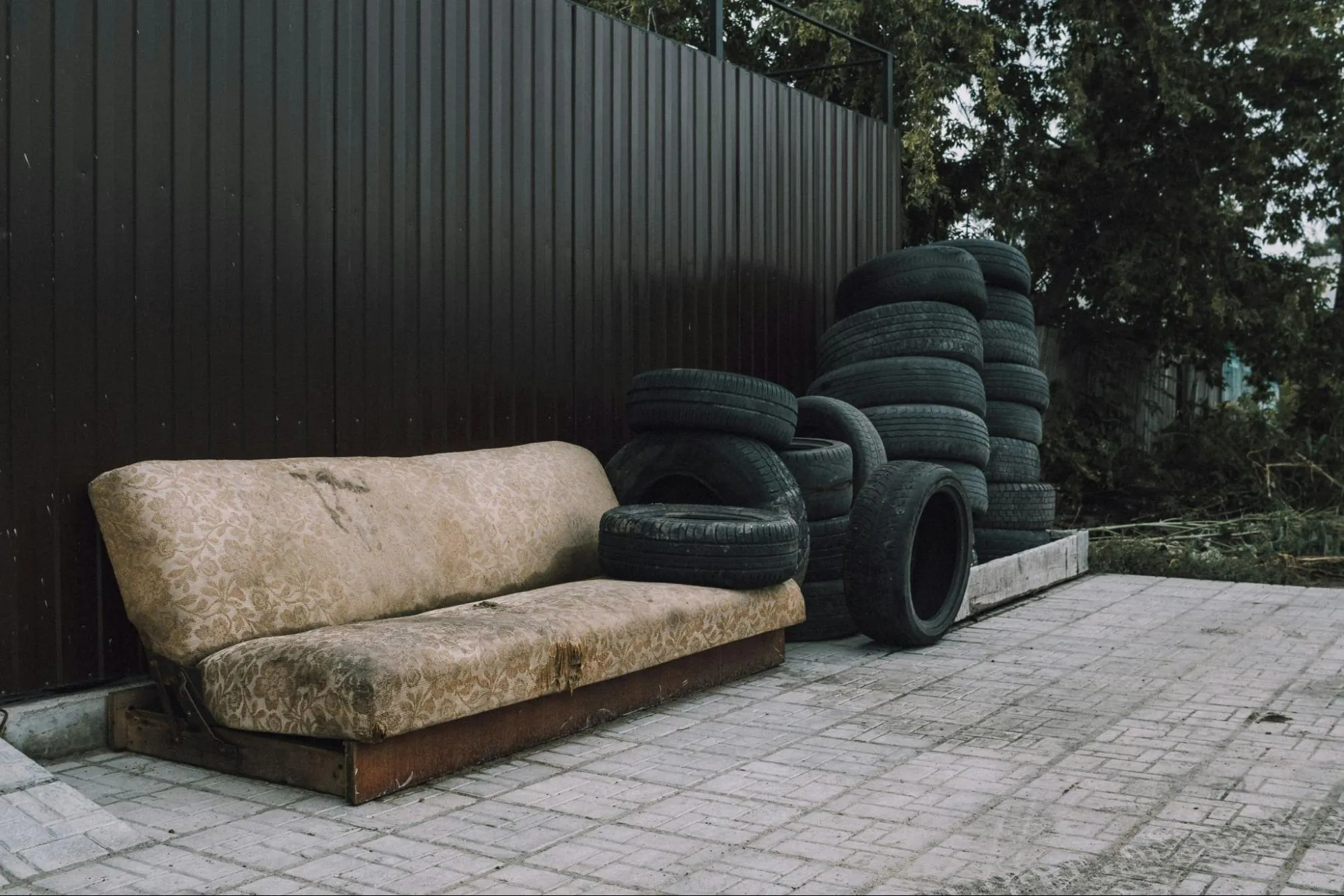
Mattress disposal logistics
Source: Unsplash
The Mattress Recycling Supply Chain
The process of recycling a mattress is a multi-step operation aimed at reclaiming as much material as possible with as little impact on the environment as possible. The process begins with collection, most likely within a 50-mile radius of the recycling plants to keep costs and emissions low from transportation. These cost grounds for transportation are, in some cases, up to 30% of the total recycling cost.
Once collected, mattresses are sorted by condition and category, a labor-intensive process that must take into account contamination in the form of bed bugs or mold. They are disassembled with equipment specifically designed to separate items like foam, metal springs, and fabric. Sorting and separation efficiently can boost material recovery rates up to 20%.
These products are subsequently refined into reusable materials. Springs are smelted, foam is torn up to make carpet underlayment, and cloth is reused. Finally, these products are shipped to factories. However, consistent demand for reclaimed material is an issue.
70,000 mattresses alone get thrown away in Richmond, Virginia, each year.
Here’s a demonstration of the scale of work required for acceptable mattress disposal
| Stage | Description | Key Challenges |
|---|---|---|
| Collection | Gathering mattresses from various sources | High transport costs, storage space |
| Sorting | Categorizing by type and condition | Manual labor, contamination |
| Disassembly | Breaking down into components | Time-consuming, equipment-intensive |
| Material Separation | Isolating materials like foam or steel | Maintaining material purity |
| Processing | Preparing for reuse | Energy consumption, equipment upkeep |
| Distribution | Sending materials to manufacturers | Market demand for recycled products |
Specialized Equipment for Mattress Deconstruction
Mattress recycling depends on a combination of clever design and heavy machinery to get the dirty work done, quite literally. Since mattresses are large and packed with mixed materials (foam, metal, fabric), recyclers employ custom machinery to dismantle them quickly and neatly.
- Automated Slitters: Such machines slit open mattresses at a rate no human can equal, and some models slice open 60 mattresses an hour. It makes the whole process go a little faster since it rips open covers to expose inner parts.
- Foam Shreds: The machines tear apart memory foam and polyurethane padding and break them down into fine particles, some as small as 1/4 inch, others as fine as 1/8 inch, depending on the available screen size. That shredded foam can be reused as carpet pad, insulation, or pet beds.
- Powerful Magnets of Magnetic Separators: They drive out steel springs and coils. Certain newer-generation models record up to 99% precision in metal return via a double-stage magnetic pulley and drum combination.
The Economics of Mattress Recycling
Recycling mattresses is extremely eco-friendly and economically beneficial. Below is the elaboration of why recycling is necessary:
- Recycling Cost: Recycling a single mattress typically costs $20 to $40. The collection, transport, and dismantling charges render recycling cost-effective and viable. For instance, a $10 dismantling charge for dumping a mattress at the Wake County landfill.
- Employment Generation: Recycling generates 7 additional jobs per ton of waste compared to landfilling. They encompass sorting employment, dismantling employment, and material processing employment, which contributes to the job base within economies at a local level.
- Industry Revenue: Mattress recycling is an over $100 million industry in the U.S. annually. As demand for green solutions persists, this industry will only grow, with more economic gains (wastedive.com).
If you're wondering how to dispose of a mattress, community events, local recycling facilities, or store return policies are great places to recycle mattresses responsibly.
Job Creation in the Mattress Recycling Industry
Ergo-expansion of mattress recycling initiatives is also creating new work across various parts of the recycling cycle. Local economic improvement and substantial human skills for the workers are implemented through these kinds of work.
- Job Creation: The typical mattress recycling factory will have 10–15 full-time workers performing operations such as collection, disassembling, and processing. An example is a Bridgeport plant intending to produce a maximum of 15 ex-offenders or other unemployed job seekers.
- Skills Required: Mattress recyclers need a range of skills, from operating equipment to handling logistics and working with materials science to tear down and process mattresses safely.
- Job Multiplier: The job multiplier for the mattress recycling sector is 1.8, or for every direct job, it encourages the creation of another 0.8 jobs in ancillary industries such as transportation and material sales.
Innovative Disposal Methods
How to dispose of old mattresses is transforming with the advent of advanced technologies that are more efficient and environmentally friendly. Such newer techniques replace traditional recycling, offering improved ways of handling mattress waste.
- Material Recovery: Various sophisticated disposal systems are capable of recycling up to 95% of the mattress materials, such as foam, metal springs, and fabrics, leaving minimal waste sent to landfills.
- Lower Carbon Footprint: Emerging technology can help lower the carbon footprint of disposing of mattresses by up to 40%, making recycling more environmentally friendly.
This video demonstrates innovative mattress recycling techniques, providing visual context to the advanced methods discussed in this section.
Mattress-to-Energy Conversion
Certain creative centers are exploring whether it is possible to use mattress material as fuel for waste-to-energy facilities. This would be capable of managing hard-to-recycle materials and generating electricity.
- Energy Generation: One ton of mattress waste generates approximately 500 kWh of electricity, providing a substitute energy source and reducing waste in landfills.
- Energy Content: Energy content in the fuel obtained from mattresses is higher than that present in municipal solid waste, and the former is a more valuable source of energy for waste-to-energy plants.
- Regulated Emissions: Mattress combustion emissions are stringently regulated to minimize environmental concern, and processing is designed with high environmental regulations.
Pyrolysis of Mattress Foam
Pyrolysis is a revolutionary technique for heating material without oxygen, and it can turn mattress foam into oil. Such oil is an effective alternative fuel source and offers an environmental solution for disposing of foam waste.
- Oil Production: Pyrolysis produces 1 ton of foam in approximately 700 liters of oil with a similar calorific content to diesel fuel, making the latter an excellent source of energy.
- Production of Oil: Pyrolysis can convert 1 ton of foam into approximately 700 liters of oil, which has a calorific value similar to diesel fuel and therefore can be a useful source of energy.
- Fewer Emissions: Pyrolysis is different from traditional incineration as it has fewer emissions, making it a cleaner waste management technology.
For example, converting 1,000 discarded mattresses to 500 liters of oil through pyrolysis in Sweden proved to be viable in its application for widespread use.
Biodegradable Mattress Designs
Cutting-edge manufacturers produce eco-friendly mattresses that can break down naturally by the end of their life, minimizing the carbon footprint of disposing of mattresses at the beginning.
- Biodegradability: Biodegradable mattresses can be largely broken down in industrial composting environments, lowering landfill space dramatically.
- Natural Materials: The mattresses use natural materials such as wool, cotton, and latex, which degrade faster compared to synthetic products.
- Easy Disassembly: Certain biodegradable mattresses are easy to disassemble, thus easier to recycle when they come to the end of their lifespan.
As people look for ways to get rid of a mattress responsibly, these green options offer a sustainable solution that reduces waste and saves resources.
For more eco-friendly disposal options, check out our guide on things that can be recycled, which includes many household items beyond mattresses.
Mushroom Mycelium in Mattress Decomposition
Researchers are exploring the application of mushroom mycelium to accelerate organic mattress material degradation, offering an effective and natural solution for mattress waste.
- Polyurethane Foam Decomposition: Some fungi have been shown to break down polyurethane foam in as little as weeks, offering a faster, more sustainable alternative to traditional recycling methods.
- Targeted Decomposition: Mycelium may be engineered to break down unique materials in mattresses, for instance, foam or fabric, to expedite the process of degradation and reduce environmental pollution.
- Soil Enrichment: Decomposition by-products of mycelium can be used as soil amendments rich in nutrients that facilitate soil health and improve agriculture while increasing environmental sustainability.
Legal and Regulatory Landscape
The disposal and recycling of mattresses are subject to a complex set of statutes and laws different from one state to another. Knowledge about the legal laws is crucial for customers and companies dealing in mattress disposal.
- Regulation Overview: Many states in the United States have unique legislation around how to dispose of old mattresses, from producer responsibility programs to landfill bans.
- Illegal Dumping Fines: In other jurisdictions, illegal dumping of mattresses can lead to fines as much as $10,000; hence, the need to dispose of them in line with regulations.
Check the following table for more on different types of regulations.
| Regulation Type | Description | Examples |
|---|---|---|
| Extended Producer Responsibility (EPR) | Manufacturers are responsible for end-of-life management of their products. | California, Connecticut, Rhode Island |
| Landfill Bans | Prohibit the disposal of mattresses in landfills. | Massachusetts, North Carolina |
| Recycling Mandates | Require mattresses to be partially or fully recycled. | New York, Oregon |
| Disposal Fees | Fees charged to consumers for mattress disposal, often funding recycling programs. | Many municipalities |
| Take-Back Programs | Retailers must accept old mattresses when delivering new ones. | Some cities and states |
These regulations aim to reduce environmental impact and promote responsible mattress disposal.
Extended Producer Responsibility (EPR) Programs
PR (Extended Producer Responsibility) programs are shifting the cost of mattress disposal onto manufacturers and retailers, encouraging sustainable design.
- Higher Recycling Rate: EPR programs can increase the recycling rate of mattresses up to 75%.
- Manufacturer Fees: Manufacturers contribute $9-$16 per sold mattress to fund recycling operations.
- Sustainable Designs: EPR programs prompt manufacturers to design more recyclable mattresses.
California's Mattress Recycling Council
California's pioneering mattress recycling program is a blueprint for other states, recycling over 6 million mattresses since 2016. The program prevents about 1.5 million mattresses from landfills each year, which saves space and promotes a cleaner environment. To make these ongoing efforts possible, there is a recycling fee of $10.50 per bed or box spring, which keeps the program funded on an ongoing basis.
International Mattress Disposal Practices
Different countries have varied methods of recycling mattresses. Recycling household waste, such as mattresses, to 50% has been required in the EU through the Waste Framework Directive. It aims to have recovered 80% of total waste streams in Australia by 2030. Mattress recycling percentages vary between 0% and 70%.
Japan's Mattress Recycling Technology
Japan has led the way in developing sophisticated mattress recycling technologies, achieving up to 97% recovery of mattress materials using innovative processes, such as automated sorting machinery with the capacity to sort up to 200 mattresses hourly. These technologies radically improve efficiency in recycling operations.
In addition, Japan's Home Appliance Recycling Law, which legally mandated recycling of large household appliances, indirectly aids mattress recycling by encouraging country-wide collection and recycling efforts. This combined system, linking technological innovation with firm legislation, offers valuable lessons that could improve worldwide mattress recycling processes and further global sustainability.
The Psychology of Mattress Attachment
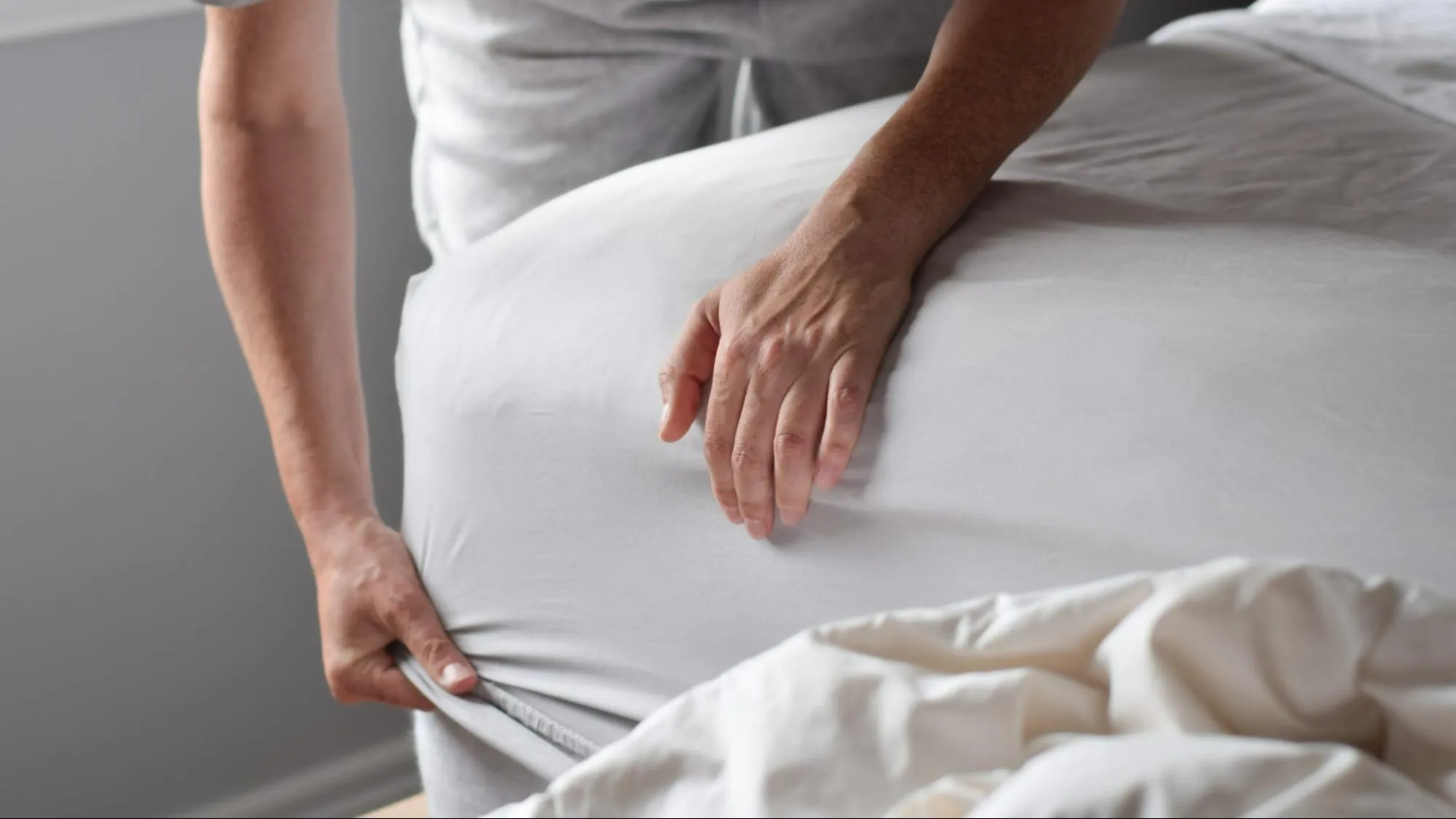
Your guide to mattress disposal
Source: couponqueen.co.uk
Ever wondered why disposing of an old mattress can be so strangely emotional? Well, as it turns out, there is more than the hassle of moving an unwieldy object. People develop an attachment to their mattresses, and the act of replacing them becomes unexpectedly difficult. Let us examine the reasons for this phenomenon and why accepting these emotions is key to getting rid of a mattress.
- Sleep Quality: A comfortable mattress guarantees good sleep, which is very important for overall health and happiness. The positive association between the mattress and good sleep can make it difficult to let go.
- Personal Memories: From late-night talks to lazy Sunday mornings, many personal moments are shared in bed. These memories can cause a mattress to have sentimental value.
- Financial Investment: High-quality mattresses can be expensive. The significant financial investment can lead individuals to keep a mattress longer than recommended to maximize its worth.
Our attachment to mattresses is a blend of comfort, memory, and investment. Becoming aware of these factors can make us mindful of the necessity to replace them at the appropriate time, balancing emotional attachment with health and environmental concerns.
For tips on overcoming attachment to household items, see our guide on decluttering, which offers strategies for letting go of possessions.
Why We Can't Let Go of Our Old Mattresses?
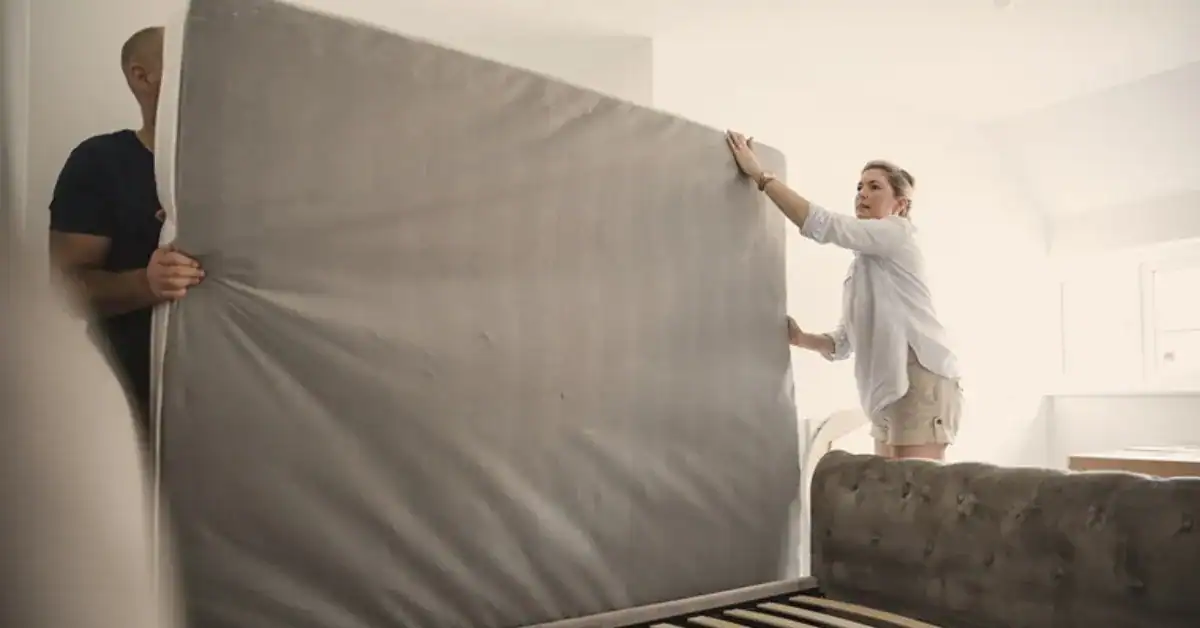
How to get rid of a mattress regardless of emotional connection
Source: choice.com.au
Have you ever held an old mattress for far longer than you probably should have, simply because it just feels right? You're not the only one. There's a name for this sort of attachment: Sleep Sanctuary Syndrome.
It's that emotional bond to keep a mattress even when it's sagging, stained, or giving you back problems, just because it's comfortable and feels secure.
What Is “Sleep Sanctuary Syndrome”?
Think about it: your bed is not just where you lie your head. It's your nest, your rest area, your retreat after a long day. So when the time comes to replace your mattress, it's not just a practical decision; it can be a straight-up emotional one.
We get used to how our bed feels. Even if it's not actually good for our bodies anymore, our brains connect that feeling, that dip, lump, and all, with comfort.
The Science Behind the Struggle:
It will take approximately 3 to 4 weeks to fully adjust to a new mattress. Your body must "relearn" sleeping on a new surface.
Your sleep quality can decrease temporarily, as studies show that sleep quality can drop during the first few nights on a new mattress.
Anxiety about changing mattresses makes you question, will it be as comfy as the old one?! This can cause short-term insomnia for some people.
Mattress Memories and Nostalgia
Have you ever had one of those moments when you just couldn't get rid of something because of what it represented to you? A favorite old jacket, a cherished childhood toy. Or, you know, it sounds ridiculous, a mattress. Mattresses aren't simply where we sleep. To many of us, they're a home away from home.
Your bed may have seen some of the biggest moments in your life: late-night conversations, afternoons spent snoozing with loved ones, or even just the simple pleasure of a good night's rest after a long day. These memories can make saying goodbye to your old bed surprisingly hard, even when it's far beyond its useful life. Here’s why it’s hard to let go:
- Memories That Last: A mattress can hold memories of important life experiences.Emotional connections can make it feel more precious
- Nostalgia Keeps You Hanging On: People are more likely to hold on to a mattress past its expiration date if it's connected to important moments in their lives
- Health Impact: An old mattress can reduce your sleep quality by 15% in the long run, which leads to back pain, sleep issues, and general health issues
Overcoming Mattress Disposal Anxiety
Let’s face it! Getting rid of an old mattress can be surprisingly stressful. You’ve probably had it for years, maybe even decades, and it’s seen a lot of your personal history. Whether it’s been there for every Netflix binge or the place where you’ve spent countless nights dreaming, parting with it can feel like a big deal. But don’t worry, you’re not alone in feeling this way!
There really is a lot of psychology and science behind why we attach ourselves to our mattresses, and that can make it a whole lot simpler to understand the disposal process.
Benefits of Proper Disposal
- Recycling Benefits: Approximately 80% of a mattress is recyclable, from metal, foam, and fabric that can be reused to reduce landfill waste.
- Less Stress: Learning about the environmental benefits of disposal reduces stress, making you feel more responsible and confident in your choice.
- Health & Sleep Benefits: Removing an old mattress kills dust mites, allergens, and bacteria that cause better sleep, reduced back pain, and overall health.

How to dispose of a mattress is our priority
Source: istockphoto.com
If you’re feeling anxious about getting rid of your old mattress, it’s completely normal. But by educating yourself, gradually transitioning, focusing on the benefits, and knowing the steps about how to dispose of a mattress, you can make the process a lot easier.
Mattress Disposal in Disaster Recovery
When disasters strike, destruction is not just physical. It generates enormous waste, particularly in the form of mattresses. It is not as simple as throwing away mattresses that are left in a city after disasters like floods. Improper disposal increases mold transmission, which can lead to serious health complications. The CDC further emphasizes that being exposed to mold will exacerbate diseases like asthma and bronchitis. Hence, proper disposal is essential not just for environmental security but also for public health.
Solutions for Mattress Disposal
- Recycling: The Mattress Recycling Council and other companies break down mattresses into recyclable materials, such as metal and foam, that can go into products like playground padding.
- Specialized Services: Disaster recovery providers utilize mobile units to break down mattresses in the field, expediting the disposal process and reducing the amount of transportation necessary.
- Public Awareness: Educating residents on how to properly dispose of mattresses can help avoid further issues from arising.
Flood-Contaminated Mattress Handling
Flood-contaminated mattresses pose a health risk with possible contamination by bacteria and mold. Specialized drying, early treatment, and removal are required to reduce these risks and prevent secondary contamination at impacted locations. Key considerations are:
- Health Risks: Bacteria and mold will form on mattresses within 48 hours of being exposed to water.
- Salvage Techniques: Expert drying can salvage mattresses when performed within 24 hours.
- Proper Disposal: Proper disposal reduces illness, preventing future contamination of flooded areas.
Mobile Mattress Decontamination Units
In disaster zones, management of mattress waste is critical for health and sanitation. Mobile mattress decontamination units are being developed to solve the problem, offering rapid, on-site treatment in emergencies. Key benefits of mobile decontamination units include:
- Efficient Processing: Processes many mattresses each day, offering rapid response.
- Cost Savings: Offers savings in transport costs by processing mattresses on site.
- Advanced Sterilization: Destroy harmful microorganisms through UV technology, ensuring safety.
Mass Disposal Logistics in Refugee Camps
Management of refugee camp mattress waste is essential for maintaining hygiene and preserving the environment. With high-density living conditions, proper means of disposal are essential in minimizing health hazards and environmental contamination.
- Annual Mattress Waste: Managing this amount of waste requires careful coordination, as mattresses are often made of non-biodegradable materials like foam and fabric, contributing to long-term landfill issues.
- Biodegradable Solutions: Biodegradable mattresses break down within 2 years, minimizing long-term environmental impacts.
- Compression Technology: Compression of mattresses reduces storage space, making it easier to dispose of.
The Future of Mattress Design and Disposal
Imagine a world where your mattress not only lasts longer but is also simpler to dispose of and better for the environment, too. Well, we're on our way, thanks to some amazing innovations in mattress technology.
Technology and design advancements focus on making mattresses more sustainable and less of a hassle to work with after they've served their purpose.
- Cost Savings: New mattress designs would lower the disposal cost by up to 50% with a simpler breakdown.
- Smart Mattresses: Mattresses in the future can have sensors that monitor wear and tear, informing us when the time has come for replacement, minimizing wastage.
- Recyclable Materials: In the future, material science may advance to create fully recyclable mattresses, minimizing environmental footprint and enhancing sustainability.
Self-Disassembling Mattresses
Imagine a mattress that breaks down into recyclable parts when it's time to replace it—sounds like science fiction, doesn't it? Well, innovative manufacturers are already developing this concept, and it could transform the process of recycling mattresses.
- Recycling: Self-destructing mattresses could improve recycling time.
- Extended Lifespan: Modular construction allows for the replacement of parts separately, extending mattress lifespa.
- Intelligent Materials: Thermally or electrically activated materials may initiate disassembly, so the process will be more efficient.
Nanotechnology in Mattress Recycling
Nanotechnology offers promising opportunities for recycling mattresses. Acting at the molecular scale, it could make recycling more efficient, with greater material recovery and less waste.
- Selective Degradation: Nanoparticles could be employed to selectively target specific materials within a mattress to break down more easily.
- Improved Sorting: Nano-sorting machines could enhance material separation accuracy.
- Increased Lifespan: Nanotech coatings could extend the lifespan of a mattress by reducing the disposal frequency.
Circular Economy Mattress Subscriptions
Mattress-as-a-service is a new, green trend that's revolutionizing how we think about mattress ownership. Under this method, manufacturers own the mattress and are responsible for its disposal, promoting sustainability.
- Subscription models can reduce individual mattress waste.
- Manufacturers can recycle and reuse up to 80% of mattress material using closed-loop systems.
- Smart beds use information to optimize upkeep and replacement, increasing their durability.
Learning Recap
Finally, we answered the question of how to dispose of old mattresses in an environmentally friendly way. And at Jiffy Junk, we see old mattresses as a chance to protect the planet by recycling valuable materials and reducing landfill strain. Our residential junk removal services and commercial junk removal services are designed to help you dispose of mattresses the eco-friendly way.
If you're curious about costs, check out our guide on how much junk removal costs.
Here’s what you need to know about disposing of your mattress responsibly:
- Mattresses release toxic chemicals and microplastics if not properly handled
- Recycling can recover foam, steel, and fabric for reuse in new products
- Specialized recycling methods and facilities help reduce environmental damage
- New solutions like mattress-to-energy and biodegradable designs are emerging
- Regulations are pushing for more recycling through Extended Producer Responsibility (EPR) programs
- Emotional attachment can make mattress disposal harder, but proper disposal boosts health and sleep quality
- Disaster recovery requires quick, safe mattress handling to prevent mold and contamination
Not sure how junk removal works? Here’s a simple guide on how junk removal services work.
Why Jiffy Junk?
At Jiffy Junk, we don't just haul away your old mattress; we prioritize sustainable, responsible disposal practices. Whether you want to get rid of a mattress or manage a larger cleanout, we deliver it all with an optional white-glove service along with an eco-first mindset.
More from Jiffy Junk
Robust Service
Interested in Getting Started?
Have a big cleanout job that needs to be done right away? Contact us today. We'll get rid of your junk in a jiffy!
Fast & Reliable
What Our Customers Are Saying
Thousands of satisfied customers across America have shared their Jiffy Junk Experience.
